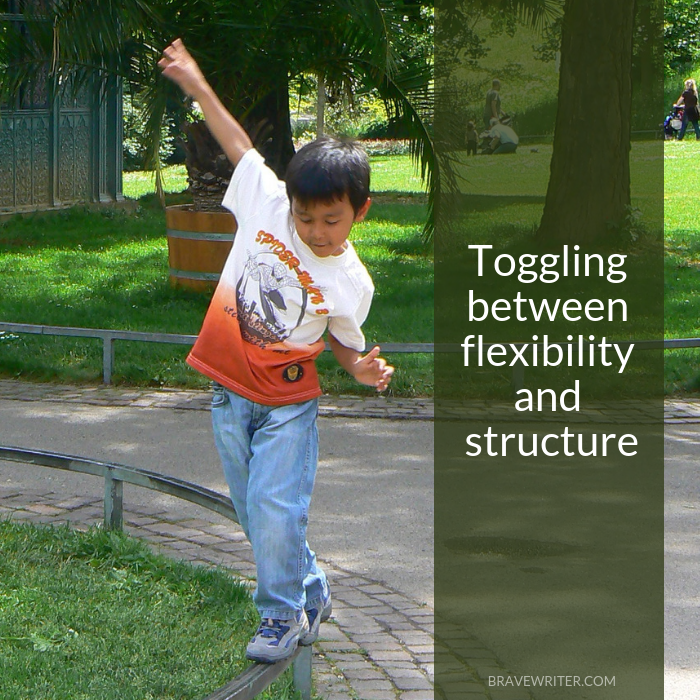The Sweet Spot

How do you make a plan for your kids that takes into account their creativity, imaginations, interests, and quirky personalities, all while hitting academic objectives?
The traditional model of school is tempting and many of us attempt to bring it home (calendars, time slots, lesson planners). The toddlers are less amenable to the schedule and often times the flu or carpet cleaning or pregnancy messes with the schedule anyway!
The flip side is our wish to see learning flourish without our heavy-handed directing—children learning in a pool of light by the window. An “unschooling” vision of learning—as if by magic!
Somewhere between these two approaches to home education is the “sweet spot.” Most parents prefer some evidence they can measure that learning is happening and most kids prefer to pursue their interests (any interests) without interference.
The goal, then, is a homeschool routine—practices that repeat, that highlight or feature particular subject areas, that allow for incremental progress in specific skill sets (like math and reading), and a daily rhythm that everyone comes to know as “daily life together.”
Within the routine is space for flights of fancy, charging down a path to a new insight or experiment, becoming absorbed in a particular line of inquiry for an indefinite amount of time, trips to the zoo and art museum, and time to do nothing but play!
The “Sweet Spot” in homeschool is to toggle between flexibility and structure—but holding both loosely—not gripping either one too tightly as though they will save you from educational shipwreck. Some seasons call for more structure (even outside classes!) and other seasons call for more freedom to explore, unwind, recover, or deeply dive.
You don’t have to balance these two poles perfectly each day or even each week. Being aware of the possibilities that each one offers is enough—and then adjusting your expectations and choices accordingly.

Top image by dierk schaefer (cc cropped, text added)

















